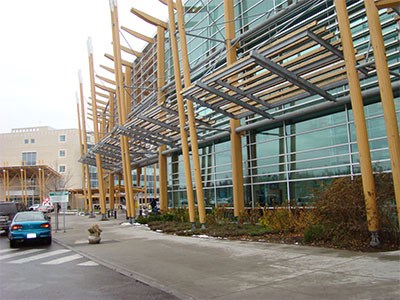THUNDER BAY – At the start of Wednesday, the Thunder Bay Regional Health Sciences Centre had 425 in-patients with officials anticipating another 20 admissions throughout the day, putting the hospital about 50 patients over capacity for the 375 provincially funded beds.
With the hospital about to enter a stretch where admissions typically rise just before Christmas with further increases expected from January through mid-March, executive vice president Dr. Mark Henderson said the surge capacity – formerly referred to as gridlock – isn’t expected to get better anytime soon.
“It may actually be worse. We’re hoping it won’t be worse and we’re doing everything we can of course to make it better,” Henderson said on Wednesday.
“We’re constantly working on our average length of stay so patients who are able to go home, that we’re as efficient as possible when they’re in hospital that there are no delays waiting for tests or consultation.”
While flu season usually leads to a rise in patient volume, it can also lead to an increase in complex complications, he said.
“A bad flu season can certainly increase admissions to hospital, not only because of the flu itself but people for example with heart problems if they get a flu it affects them more severely,” Henderson said.
Last month the provincial Ministry of Health announced temporary funding to cover additional beds at hospitals across Ontario, including 12 at the Thunder Bay regional hospital.
Henderson said that additional money will help offset beds the hospital had already added, including eight in the surgical day care area and another five or six where single rooms had been converted to double rooms. The cardiac catheterization lab can also be utilized as an overflow space.
“The funds from the ministry means we won’t be running a deficit in running those beds,” Henderson said, adding the costs of the beds range from $600 to $800 per day.
But any attempts to mitigate and add beds to certain areas has a downside, Henderson added.
“The disadvantage of using single rooms as double rooms is if you have a patient who requires isolation, then you can’t use the other bed in the room,” Henderson said. “From that point of view it’s wasted and we do have quite a few patients in hospital at any one time who legitimately need isolation for infective reasons. If there’s a single room available, that’s great, but if it’s a double room then the other bed has to be closed so we lose efficiencies there.”
Of the patients at the hospital at midnight on Wednesday, Henderson said 72 are classified as alternate level of care, meaning they are awaiting admission to other health care facilities such as St. Joseph Hospital or a long-term care home.
Across the local health care system there is a bottleneck of patients waiting to be moved to facilities more suited for their individual needs, he said.
“We are hoping if beds open up in long-term care our long-term care patients can go to long-term care and the ones at St. Joseph’s can go to long-term care and our patients who need St. Joseph’s Care can go to St. Joseph’s,” Henderson said.
“We’re hoping in the next one to two years we’ll have a substantial draw down of patients.”
